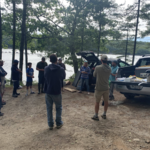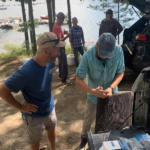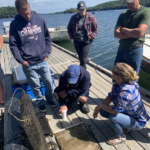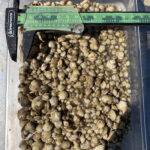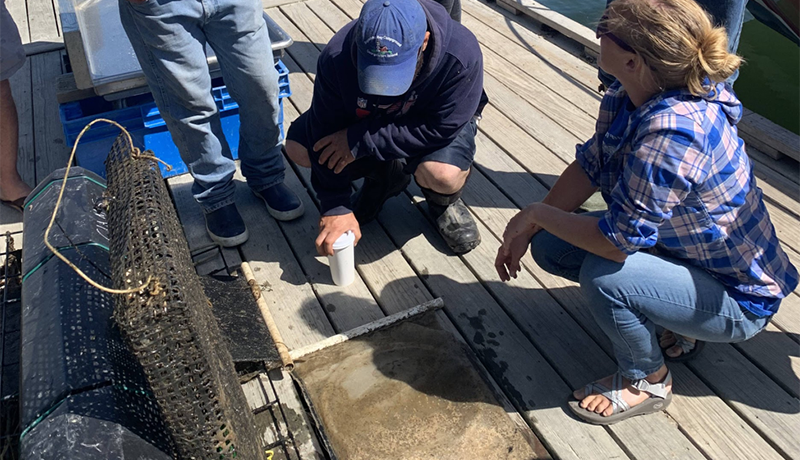
Quahog Aquaculture Effort Hosts First Training Session
With thanks to Manomet’s Ethel Wilkerson, for contributing the guest blog post below. The project is another example of efforts along Maine’s coastline to diversify the working waterfront, and to explore ways in which the fishing and aquaculture industries can integrate. – D. Morse
On August 28th, oyster farmers from mid-coast Maine gathered in Georgetown to learn about growing hard clams (quahogs) on their farms. This training was the beginning of USDA SARE Partnership Grant awarded to Manomet, a non-profit organization based in Brunswick, and Jordan Kramer of Winnegance Oyster Farm to test methods for quahog aquaculture in Maine. Oyster farmers will test growing quahogs in cages on the seafloor, below floating oyster cages, within the existing footprint of their oyster farm.
Participating farmers received instruction from Kramer who has grown quahogs on his farm in West Bath using similar methods since 2017. The workshop concluded with each farmer receiving approximately 20,000 seed quahogs that they will grow over the course of the next year. Farmers will be assisted by Manomet throughout this process, including monthly monitoring of growth and survival, as well as environmental variables such as water temperature, salinity, chlorophyll-a, and food availability. These results will help determine the technical and financial feasibility of this method of quahog aquaculture. Results from this project will be shared with other farmers in Maine via field trips to farm sites (July and August 2020), in a written report, and presentations.
Partners on this project include: Jordan Kramer (Winnegance Oyster), Chad Campbell (Georgetown Oyster LLC), Mike and Mark Gaffney (Eros Oyster), Lincoln Smith (Long Reach Oyster), Marissa McMahan and Ethel Wilkerson (Manomet), Cait Cleaver (Bates College), Erica Ferrelli and Rachel Lasley-Rasher (University of Southern Maine), Elizabeth Halliday Walker and Michele LaVigne (Bowdoin College), Dana Morse (Maine Sea Grant), and USDA SARE.
Visit Manomet’s website for project updates.
For more information, contact Ethel Wilkerson by email or (207)721-9040 ext. 103.
Copies of Jordan Kramer’s previous SARE reports are available online:
- Integrated oyster and littleneck clam aquaculture to increase seafarm yield
- Littleneck Clam and American Oyster Polyculture: Economic Viability and Nursery Technique

